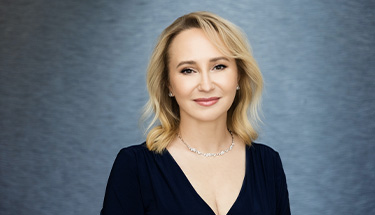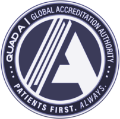Quick Links

Breast reduction surgery (or reduction mammaplasty) can be life-changing for many women, who suffer from very large breasts. Pendulous breasts can have an adverse impact on a woman’s health and quality of life. They can cause physical discomfort and an emotional burden. It may also be difficult to find clothing and bras that fit properly.
The objective of breast reduction surgery is to reduce the size of overly large breasts and reshape them in a way where they are proportionate to your body and no longer cause physical or emotional discomfort.
Am I a Good Candidate?
You may be an excellent candidate for breast reduction surgery if:
- Your breasts are too large compared to your body frame, and you find it difficult to find tops or dresses that fit.
- Your breasts cause shoulder pain or neck pain
- You have skin irritation under your breasts.
- You are self-conscious about the overly large size of your breasts.
- You have poor posture caused by excessive breast weight.
- You experience difficulty breathing or notice shoulder grooving from your bra straps.

The best candidates for breast reduction are women who have fully developed breasts, are in a healthy state, and have realistic expectations for their breast reduction procedure. The trade-offs of breast reduction surgery must be acceptable to you and include permanent scars on your breasts, the possibility of numbness in the nipple-areolar complexes, and the possible inability to breastfeed. A consultation with Dr. Capek will help fully determine your candidacy.
Before Your Procedure
Before your surgery, you will meet with Dr. Lucie Capek so she can explain the best procedure options for you. Make sure to inform her of any medical problems you have, what prescription medication you’re taking, and what your expectations are. Dr. Capek will also discuss how you can prepare for your plastic surgery and what to expect. She will also review the alternatives, risks, and benefits of breast reduction procedures. She wants you to be an informed participant in the planning process so she can ensure the best possible outcome for you.
As with any surgical procedure, you want to be in excellent health when considering breast reduction. Live a healthy lifestyle, including diet and exercise. We do not recommend this procedure if your BMI is higher than 32 because of the increased risk of complications. Pre-surgical weight loss may be necessary. It is important to follow Dr. Capek’s pre-operative guidelines to prepare for surgery and achieve the best results.
It is also imperative that you don’t smoke or be exposed to any nicotine-containing products for at least 6 weeks prior to and 6 weeks after your surgery. Smoking, and other forms of nicotine, decrease your body’s ability to heal normally and can lead to serious complications, including loss of skin or the nipple areolae, poor wound healing, severe scarring, and infection. Avoid taking aspirin, non-steroidal anti-inflammatory medications (NSAIDs: Advil, Motrin, Aleve) and vitamins/homeopathic regimens. These can increase bleeding.


board-certified plastic surgeon
DR. LUCIE CAPEK
Dr. Lucie Capek offers advanced cosmetic plastic surgery from the unique perspective of a female plastic surgeon. Since 1996, she has been serving patients in the Capital District from Albany, Saratoga, Schenectady, and Troy, NY. She is known for using the latest technology to perform body contouring, breast surgery, and facial cosmetic surgery. She personalizes every treatment to give each patient the most natural-looking results, enhancing their beauty and increasing their self-confidence. Above all, her practice is dedicated to your health and wellness. Dr. Capek understands that your beauty and confidence is about more than just your appearance. To schedule your first consultation, contact Lucie Capek, MD.
LEARN MOREYour Procedure
A breast reduction procedure is usually performed under general anesthesia in our QuadA-accredited office-based operating suite, Capek Surgical Arts, or a hospital operating room. Breast reduction surgery includes a breast lift to create an aesthetically pleasing contour. There are several techniques for breast reduction surgery, and Dr. Capek will recommend the best option to achieve your goals.
Generally, breast reduction surgery involves incisions on your breasts, which will vary depending on the size of your breasts, how much the breasts sag, and where your nipple-areolae are positioned. Most commonly, the anchor incision will be created, following the natural contours of your breasts. The anchor incision circles around the areola, vertically down towards the breast crease and along the crease under your breasts in an ‘anchor’ shape. Smaller reductions may be performed using a ‘lollipop’, or vertical, incision only. Dr. Capek will discuss the location of the anticipated scar with you before your surgery.
Dr. Capek will typically remove excess skin and breast tissue with the HARMONIC® scalpel. The amount of excess breast tissue that is removed varies based on your desired breast size and breast shape. She will reshape your breasts to create a smaller and more lifted breast, relocating the nipple-areola complex (NAC) to a higher, perkier position. This is usually done without removing the NAC from the remaining breast tissue, which improved the likelihood of retaining feelings and possibly being able to breastfeed. The procedure usually takes between two to three hours to complete.
In most cases, she will place drains for 24 hours. The incisions are closed with dissolvable sutures and skin glue so no wound care is required. Dr. Capek works diligently to provide outstanding results while making your recovery as comfortable and simple as possible.
Liposuction for Breast Reduction
In some cases, Dr. Capek may be able to utilize a liposuction technique like VASER LipoSelection to reduce breasts that are fatty and need a minor to moderate reduction. This technique is virtually scar-less but does not address significant sagging since no skin is removed. The amount of lifting achieved will therefore be minimal.
Procedures in 3d
After Your Procedure
After the procedure, your smaller breasts will provide a better-proportioned figure and any physical pain from oversized breasts should start to alleviate.
When Dr. Capek completes your breast reduction, you will wake up in a surgical bra that hooks in the front, with minimal dressings. You can expect some discomfort and tenderness for a few days after surgery, but patients usually find relief with either Tylenol or non-opioid prescription pain medication. If you have drains, they will be removed the day after surgery and you can shower on the second day.
You will be required to sleep on your back with your torso elevated, which helps relieve pressure on your breasts, and reduces swelling and pain. It is always important to follow Dr. Capek’s post-operative care instructions to decrease the chance of complications. Avoid strenuous physical activity of any kind for the first 2 weeks. You can resume high impact exercise, like running or HIIT workouts, after 8 weeks. Follow-up appointments will be scheduled to ensure you are healing properly during your breast reduction recovery.
Unless you gain or lose a significant amount of weight, you can expect long-lasting breast reduction results. However, gravity and the effects of aging are unavoidable, which may cause your breasts to sag and loosen over time.
What Are the Risks?
Even under the care of Board-Certified Plastic Surgeon Dr. Capek, every surgical procedure carries some risk. Fortunately, serious risks are rare, and the satisfaction rate for breast reduction is very high. Some potential risks of surgery include reactions to anesthesia, infection, bleeding, permanent numbness of the skin or nipple-areola, poor quality scars, and wound healing problems. You can help reduce these risks by following Dr. Capek’s instructions before and after your breast reduction.

QuadA Accredited
CAPEK SURGICAL ARTS
Dr. Capek is pleased to offer her patients an intimate, comfortable and discreet surgical experience at Capek Surgical Arts (CSA), her state-of-the-art Quad A accredited operating suite right here in Latham, NY. You can undergo your procedure under the expert care of board-certified Plastic Surgeon Dr. Capek and her exceptional team of anesthesia and clinical staff without having to go to a hospital or surgery center.. Cae you can expect with Dr. Capek and her team.
LEARN MORESchedule a Consultation
Dr. Capek is always available to her patients for necessary follow-up appointments and long-term care to help you with any concerns that may arise after surgery. To learn more about breast reduction in Albany, NY, and to find out which procedure is right for you, schedule your consultation with Dr. Capek today.
Patients throughout Albany, Schenectady, Troy, and Saratoga trust Dr. Lucie Capek to perform their breast reduction surgery. Many of our patients also travel from out of state and around the country to receive her skilled and compassionate care.
SCHEDULE A CONSULTATION
For more information, schedule your consultation appointment with Dr. Capek today!







